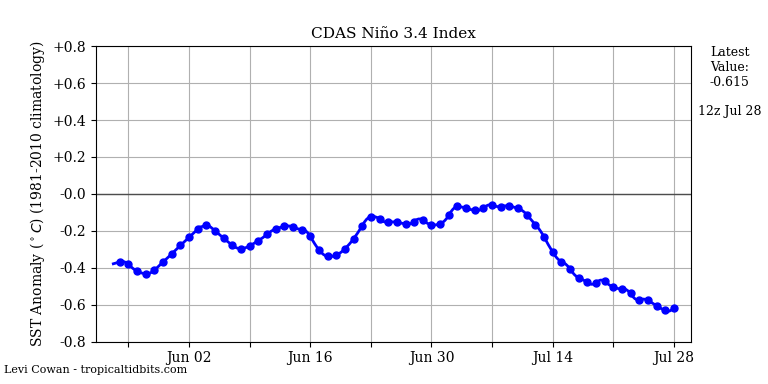EL NIÑO/SOUTHERN OSCILLATION (ENSO)
DIAGNOSTIC DISCUSSION
issued by
CLIMATE PREDICTION CENTER/NCEP/NWS
and the International Research Institute for Climate and Society
8 November 2018
ENSO Alert System Status: El Niño Watch
Synopsis: El Niño is expected to form and continue through the Northern Hemisphere winter 2018-19 (~80% chance) and into spring (55-60% chance).
ENSO-neutral continued during October, despite widespread above-average sea surface temperatures (SSTs) across the equatorial Pacific Ocean
[Fig. 1]. All four Niño regions showed increased SST anomalies in October, with the latest weekly values near +1.0°C in the Niño-4, Niño-3.4 and Niño3 regions, and +0.2°C in the Niño-1+2 region
[Fig. 2]. Positive subsurface temperature anomalies (averaged across 180°-100°W) also continued
[Fig. 3], due to the persistence of above-average temperatures at depth across the eastern half of the equatorial Pacific Ocean
[Fig. 4]. However, atmospheric convection remained slightly suppressed near the Date Line and over Indonesia
[Fig. 5]. Low-level westerly wind anomalies were observed over the eastern Pacific during October, while weak upper-level westerly wind anomalies were present over the far western Pacific. The traditional and equatorial Southern Oscillation indices were near zero. Despite the above-average ocean temperatures across the equatorial Pacific Ocean, the overall coupled ocean-atmosphere system continued to reflect ENSO-neutral.
The majority of models in the IRI/CPC plume predict a Niño3.4 index of +0.5°C or greater to continue through the rest of the fall and winter and into spring
[Fig. 6]. The official forecast favors the formation of a weak El Niño, with the expectation that the atmospheric circulation will eventually couple to the anomalous equatorial Pacific warmth. In summary, El Niño is expected to form and continue through the Northern Hemisphere winter 2018-19 (~80% chance) and into spring (55-60% chance; click
CPC/IRI consensus forecast for the chance of each outcome for each 3-month period).







